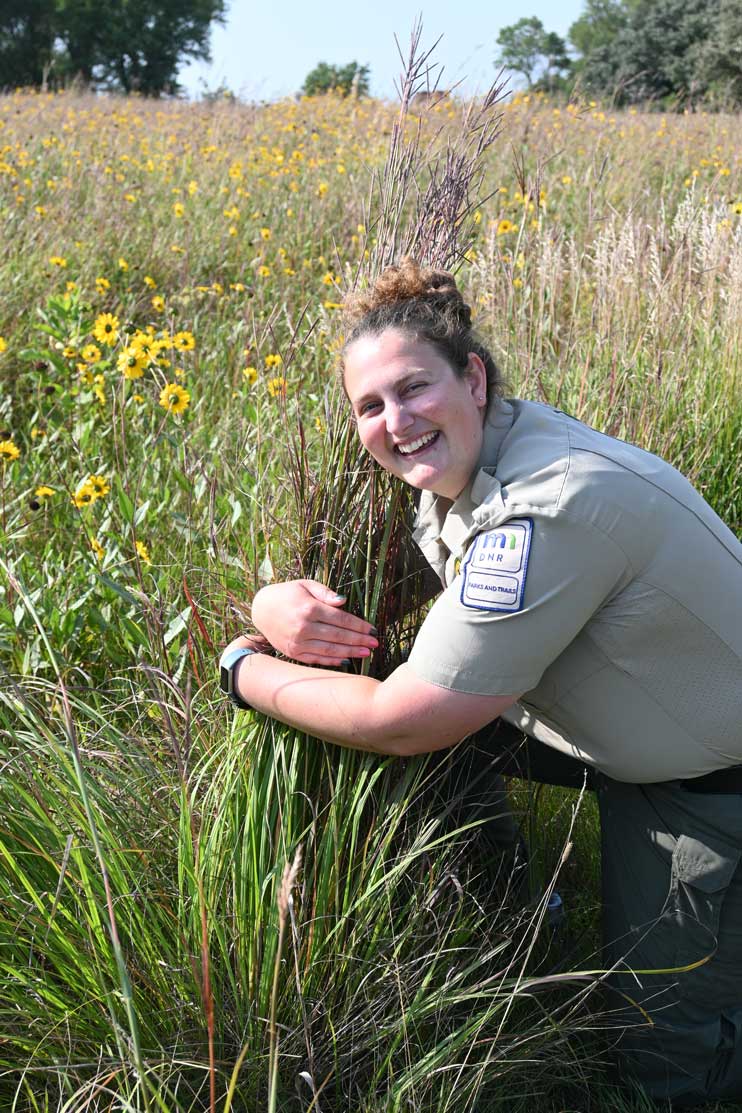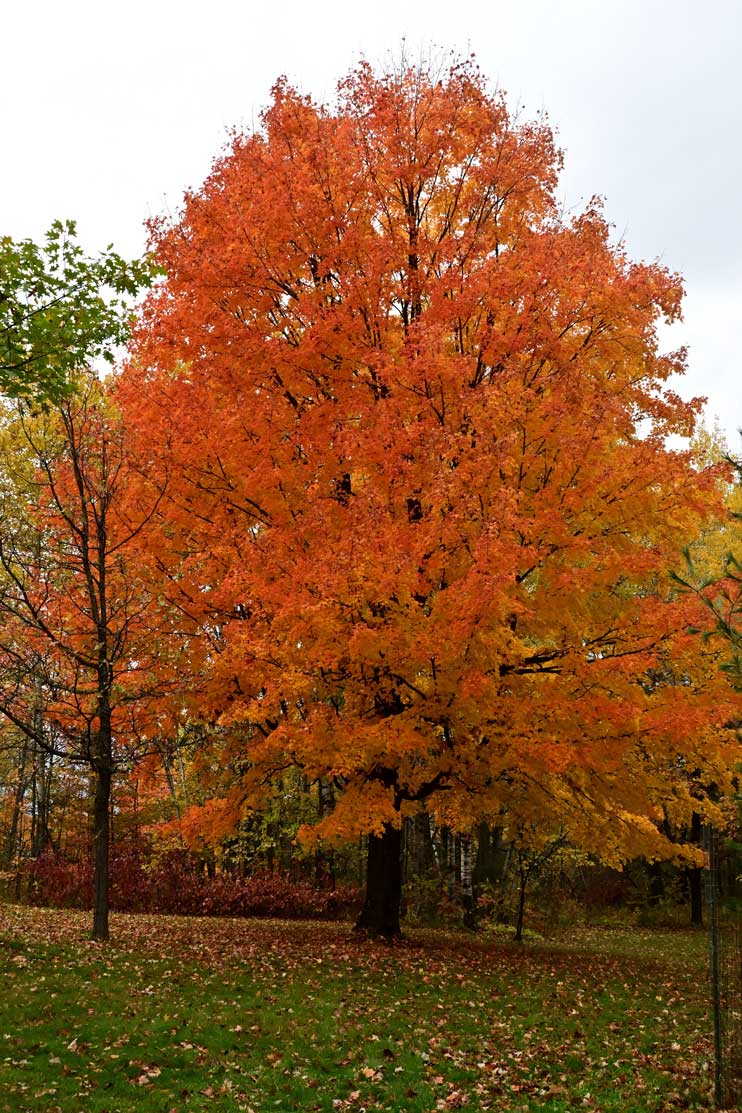State Park Staff Explain The Art And Science Of Predicting Fall Color
By Deborah Locke, DNR Information Officer
Once again, the Parks and Trails Division of the Minnesota Department of Natural Resources will offer its Fall Color Finder at mndnr.gov/fallcolor. The website’s primary purpose is to report the status of leaf color change across the state so people can finalize their travel plans to get outdoors and enjoy the fall colors season. In addition to the fall colors map of Minnesota, the website offers photos of state parks from park staff and visitors, and shares information on the science of fall color changes.
Ty Gangelhoff, an assistant supervisor at Jay Cooke State Park, has reported on fall color change for 20 years, starting at Rice Lake State Park. Early in September Ty’s daily patrols through and near the park include noting leaf color change. He said that the changes are staggered. Not all tree species go through the process of losing their leaves at the same time. Peak color usually arrives at Jay Cooke State Park around the first weekend in October.
Contrast that process with the prairie’s tall grass at Blue Mounds State Park in the southwest corner of Minnesota. There the peak prairie grass color occurs by the last week of August or maybe the first week of September said Tiffany Muellner, interpretive naturalist. Species of fall blooming flowers also take their turns reaching their peak throughout the season.
What these differences show is the remarkable variety of geographical regions in our state, each with its own vegetation based on soil makeup, wildlife, and climate. Add to those variables the weather, which impacts fall color peak. That said, state park fall color reporters like Ty and Tiffany pretty much know what to expect each year as leaves transition, and they know to expect heavy visitation during peak color weekends.
“I do my best but it’s not a scientific process,” Ty said. “I come up with an average, and then a percentage range like zero to 25 percent color, while anticipating what it will be on the weekend when most visitors come through.” At Jay Cooke State Park, ash leaves change color first, followed by maple and oak leaves — and then aspen leaves. It all depends on the species.
Park staff reporting from the state’s prairies watch for color changes in the tallgrass species like big bluestem, which looks blue to purplish through August before turning brown.
“When determining percentages for the report, I look at how many flowers are still blooming,” Tiffany said. For the tall sea of rippling grasses, she waits to see how many have seeded out. Trees aren’t plentiful at Blue Mounds State Park, but the bur oak, cottonwood, and maple trees offer fall hues of brown to bright yellow.
In fall, however, beautiful floral blooms take center stage.
“It’s all about the asters,” Tiffany said. “We get a ton of goldenrods, sunflowers, and aster species. In the fall, we get stunning prairie views of the clouds, tall grasses, and flower blooms.”
As with every corner of the state, however, nature, may step in and cramp the style of park visitors eager to see fall splendor. Ty heard about a powerful rainstorm that blew through on a peak color weekend which drastically changed the appearance of the trees. “In a day or two the leaves blew off which did not match the photos we had posted on the website,” he said. “Guests were disappointed. The weather dictates where the leaves are at.”
Proximity also dictates what is reported on the website. Ty and other park staff consider color trends at neighboring parks. If Banning State Park (about 45 minutes south) posts that a peak weekend is coming up, staff at Jay Cooke may take that prediction into consideration as they report on an upcoming weekend. The map would appear puzzling if, for example, one state park was at 50 percent full color and an adjacent park was reported at 100 percent.
Another concern: sometimes a visitor will take a photo of a tree with brilliant color and post it, long before other trees reach that peak. Visitors may flock to the park anticipating that all trees are bright red when, in fact, that’s far from true. “When we report, we try to give a balanced perspective and show a broad landscape of trees down a trail or road,” Ty said.
Visitor patterns during fall color season may depend on the park amenities. “Here visitation centers around the park’s swinging bridge and maybe a walk near the river,” Ty said. “A large number of guests come for a picnic, the river and the bridge.”
Visitation numbers peaked during the pandemic years of 2020-21. Parking lots were full, and visitors parked vehicles on the highway up to a half mile from the entrance. But a full parking lot is just one concern. Extra staff may be needed to direct incoming traffic. Bathrooms need to be cleaned more often and trash cans need to be emptied.
Consequently, weekends produce intense workdays with so much going on. “At the end of the day, you can be mentally exhausted,” Ty said. “At the same time, it’s nice to have visitors who enjoy coming to park.”


















